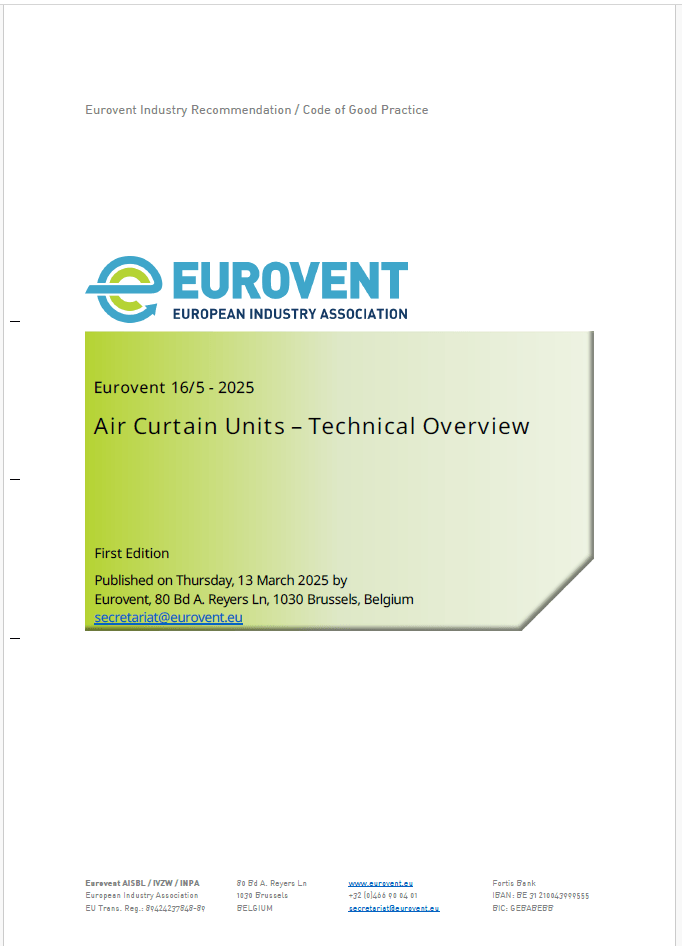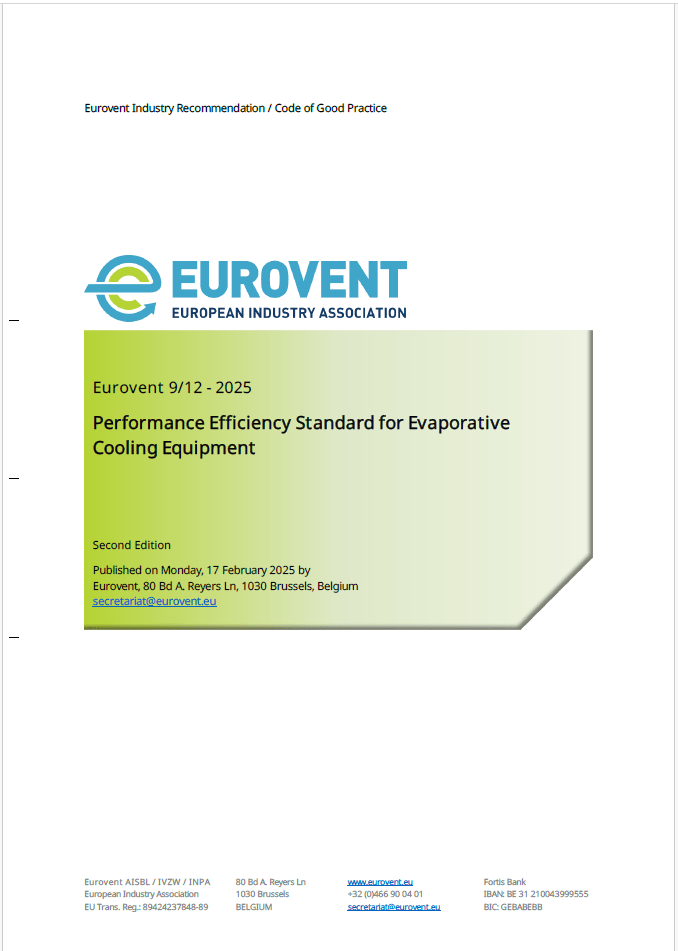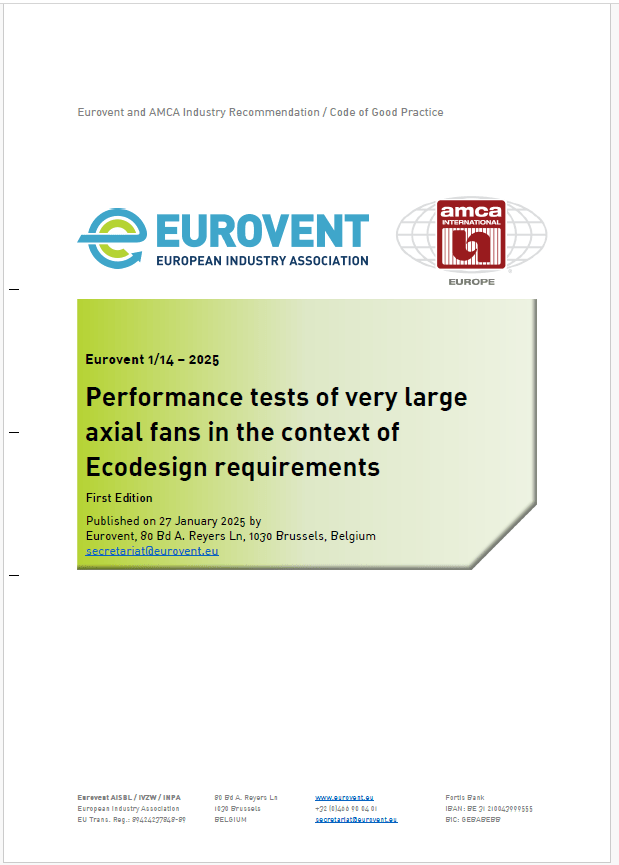On Eurovent Middle East’s 5th anniversary, Markus Lattner, Managing Director, fleshes out the long-term impact of an industry association and reflects on the Association’s early days, the challenges of fostering a spirit of cooperation, and the need to challenge the status quo in the region for the good of the industry.
5 years, congratulations on the anniversary! What does this milestone mean to you?
To me, this anniversary is an excellent moment to briefly reflect on how this journey began and to remind us of the main objective of this initiative: Bringing the industry together and providing a platform for coordination and exchange in an environment that is notoriously chaotic and driven by competition rather than cooperation.
The big challenges of our time, climate change, but also the well-being of our society can only be addressed by the industry as a whole. Governments react to these challenges with increased regulations, which equally demands coordination among industry players to ensure transparent and balanced stake-holding.
At just 5 years, Eurovent Middle East is still very young, especially in terms of an association. But reflecting on the past years, I am very satisfied with what has been achieved and how our organisation evolved. Considering that the pandemic has significantly impacted two out of these five years, I think we can be more than happy. Perhaps the most noteworthy takeaway is that we have proven the sustainability of the basic idea of having joint activities in the region.
We must thank our members, who supported and carried out our activities over these years. These companies demonstrate true commitment toward the region and show a high level of corporate social responsibility. They understand that sustainable business depends at large on a mature market, rules, and the ability to develop sustainable guidelines for an industry that is relevant to the region and its people.
Speaking about the pandemic. In which ways have the last two years impacted and influenced your work?
The essence of an association lies in its ability to bring all members together and find common grounds to work on. In every aspect of what we do, you will see hours of discussion and contributions of many people. Whether it’s a workshop, a webinar or the publication of a position paper or a guidebook. It is all based on the consensus and input of our members, which, naturally, was more difficult to manage throughout the pandemic.
We have had so many online meetings in the past two years, trying to cope with the situation as best as possible, and I am glad that we managed till now. But online meetings can never replace physical exchange. It is the networking, the personal spirit, which brings life to our initiatives. We all hope to see a further weakening of the virus and be allowed to resume our previous style of work.
But looking back, I am also proud of what we managed to do despite the restrictions. We reacted very quickly. We knew from the beginning that COVID-19 was airborne and published guidance based on this presumption. We pushed for governments to include HVACR related companies in their list of essential businesses to ensure that even amid a crisis, our industry could deliver crucial services and products.
The pandemic highlighted the importance of Indoor Air Quality, ventilation, and air filtration in a way we could have never done ourselves. It begs the question now how the public and governments cope with this experience if we see a change in the attitudes regarding our indoor environments. This will also be our responsibility, our responsibility as an industry, to provide solutions and recommendations.
From the start, IAQ has been at the forefront of our agenda. That shows that the industry was well aware of its importance. Only very few in the market really understood. If we do not see a change within the building industry and from the government side to treat IAQ with the same urgency as energy efficiency, then we won’t be prepared for the next viral outbreak. And that is just a matter of time as we have now come to fully understand.
Looking back, what were the biggest challenges when you started, and how have the challenges shifted over the years?
The biggest challenge in the region, in the beginning, continues to be the main one now, and I am afraid, will be the case for a good time to come: the understanding of the functions of an association. Mentalities in the region are very much focused on short-term profits. Making people understand the concept, the benefits, and the investment an association requires and provides is difficult. Our impact will be visible only in the future.
While the region’s workforce is driven by short term targets and is highly volatile, it is difficult to find the ones who take a long-term view and interest in seeing the region develop into a sound and sustainable market. Given this environment, it is an even greater achievement, and our members should be praised and thanked for their lasting commitment to contribute toward the greater goals of the region. They are the ones carrying the ideals of co-creation and cooperation for the benefit of all.
What are the benefits of an industry association? And what can you do to highlight its importance for the industry in the long term?
The Middle East is not a market characterised by trust. And unsurprisingly so. If everyone is out hunting for short term profits, quality and reliability fall victim. That again leaves everyone highly distrustful of each other. Government and industry, however, need trust as a basis to develop a regulatory framework that provides fair conditions for business while ensuring government policies are followed.
If authorities rely on individual companies to assess standards and technical implications, the process will remain untransparent and inefficient. An association makes for a much better stakeholder, as the positions and opinions of the industry must first be consented to before they are delivered to an authority. Secondly, an association also ensures a balance between various interests at play.
Then, aside from regulatory affairs, the industry is very interested in educating market participants on its technology and products. There is a big need for constant knowledge exchange to make sure new products are understood, accepted, and used on the market. While this is, of course, the responsibility of each manufacturer, an association can provide such education in a neutral, better-organised way, and in a highly credible environment.
Can you name some of the biggest issues the industry is facing in the region?
This is not specific for the Middle east only, rather a general picture we face all around the globe.
- Fixation on prices
- Lack of qualified personnel
- Proliferation of regulations around the GCC and even within a single country
- Lack of harmonisation among authorities, untransparent market surveillance
- Lack of knowledge on standards
- Lack of good practice and generally technical solutions
- Administrative requirements without value
- Copy-paste mentality among consultants carrying forward old habits and mistakes
- Ignorance for IAQ and energy efficiency
- Generally, a lack of cooperation.
That gives a good picture and clarifies what we are trying to work on and achieve. No one can possibly work on these issues alone. If we want to see improvements, we better work together. Only then will we have the strength and the resources to achieve change.
Assuming the pandemic is fading, and restrictions are dropped, what are your plans for this year?
Eurovent Middle East will celebrate its 5th anniversary with a major industry event. Our Eurovent Middle East Industry Summit, “HVACR Next Generation, Rethinking policies and strategies,” which will take place from 13 to 14 September, will be an excellent opportunity to bring government and industry together to highlight several of the most pressing issues while allowing us to celebrate with our members and partners appropriately.
Aside from that, we are working on several projects in the field of education, IAQ and energy efficiency, which we plan to roll out later in the year. We also look to restart our physical workshops across the region. AHUs will get some more attention, partly due to the introduction of the Eurovent Certification for hot and humid climates and regulatory developments that will look at the ventilation segment for the first time.
As the one who started this project, what is your personal takeaway from the last 5 years?
It has been very intense, challenging, and stressful years. However, it has been equally rewarding in terms of the relationships I have built and the tremendous range of knowledge I could gather. From wet-bulb temperatures to leakage rates, from volatile organic compounds to biodegradable plastic. I could not imagine a more diverse environment to be active in. I am very grateful for this experience.
These five years we owe to the dedication, commitment, and support of many people. The work and time contributed by our members, our board and staff have made Eurovent Middle East a success. I do hope that this project will flourish and outgrow our initial expectations. May it live on to become an institution that thrives also when the founding generation has retired.




















